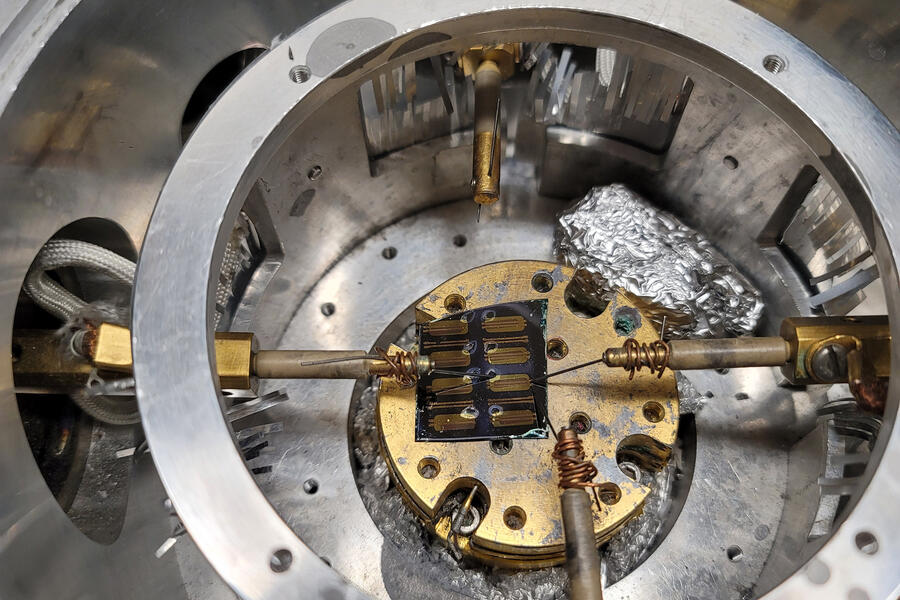A team of Johns Hopkins materials scientists made a surprising discovery that could change the way memory works in electronics. By tweaking the materials used in organic material-based logic switches called transistors, they created a new kind of memristor—devices that can remember past charging states when a current passes through it—suggesting the potential for developing electronic memory systems that mimic the way human brains work. Their results appear in Advanced Functional Materials.
"Initially, our goal was to understand what happens during transistor charging," says team member and graduate student Riley Bond. "We wanted to pinpoint where the charge is trapped in these transistors and improve the device's overall charging capabilities, ensuring the transistors didn't short circuit when voltage was added."
Key Takeaways
- The surprising discovery suggests there is potential to develop electronic memory systems that mimic the way human brains work and form memories
- The device could one day decrease the massive amounts of energy consumed by cloud data storage
Led by Howard Katz, professor of materials science and engineering at the Whiting School of Engineering, the team introduced a molecule called dibenzo tetrathiafulvalene, or DBTTF, to the transistors. This molecule forms crystals within the transistor's insulating layer, where the researchers predicted the charge would be stored. After injecting a small current across the modified transistor, they noticed an unexpected effect: The transistor retained its past charge, demonstrating a capability to remember, acting as a memristor.
"Usually, transistors don't retain previous charges when recharged," says Bond. "This one adjusted based on the previous charge, indicating a memory-like function."
He noted a similarity in how memristors function and how the human brain forms memories.
"When we make new memories, new synapses form within neurons, and these changes in nerve pathways can be measured," says Bond. "Memristors operate similarly, adjusting their current based on previous voltages, much the way the brain adapts. This means memristors could shift how computers handle data, improve efficiency, and learn."
They could also address concerns related to data storage strategies, which currently consume massive amounts of energy, he said.
"Every gigabyte of data in the cloud is physically stored on 48 billion transistors, located in huge warehouses. These switches are about as small as they can get—so, sticking with traditional transistor computing won't save space or energy," says Bond. "A few memristors could replace so many transistors, which would increase computer efficiency while decreasing power consumption and the need for physical space," he says.
Since its discovery, the team has expanded its focus.
"We are now exploring other transistors we've experimented with, looking for memristor behavior and investigating if those transistors could be used in this new technology," says Bond.
Posted in Science+Technology
Tagged materials science








